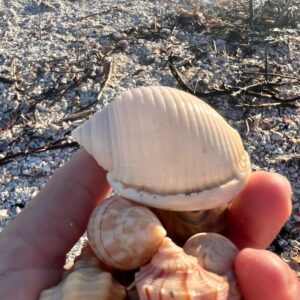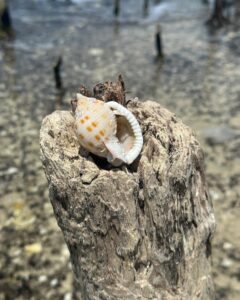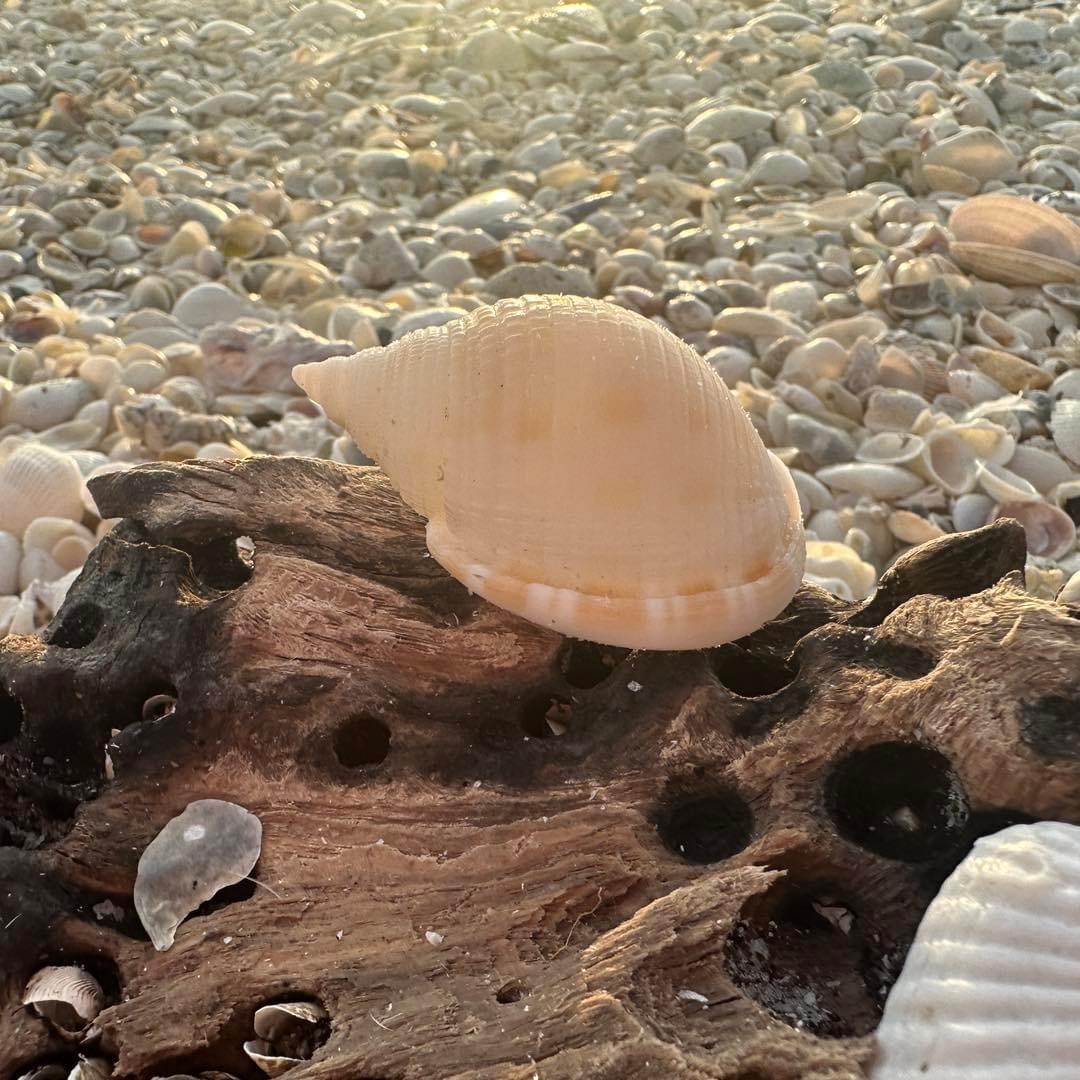Embark on a captivating journey to discover the mesmerizing beauty and unique characteristics of Scotch Bonnet Shells, nature’s exquisite artwork adorning the shores of the Ten Thousand Islands.
The Captivating Aesthetics of Scotch Bonnet Shells
Scotch Bonnet Shells (Semicassis granulata) are nature’s masterpieces, renowned for their captivating aesthetics that make them stand out among other seashells. These shells exhibit a stunning array of vibrant colors and intricate patterns, resembling a tam o’ shanter, a traditional Scottish bonnet. Their color palette includes shades of orange, yellow, pink, and brown, often adorned with intricate swirls, lines, and granulations. The shells have a shimmering surface that reflects light, adding to their allure. The unique shapes and diverse color variations found in Scotch Bonnet Shells have made them a favorite among shell collectors and beachcombers alike.
 Ecological Significance and Habitat of Scotch Bonnet Shells
Ecological Significance and Habitat of Scotch Bonnet Shells
Scotch Bonnet Shells play a vital role in marine ecosystems, particularly in coral reefs and coastal habitats. These shells provide essential shelter and protection for various marine organisms. Many small organisms, such as hermit crabs and snails, use the empty Scotch Bonnet Shells as their homes, finding refuge from predators and harsh environmental conditions. In this symbiotic relationship, the shells benefit from the organisms’ cleaning activities, while the organisms benefit from the shell’s protection. The presence of Scotch Bonnet Shells contributes to the overall balance and biodiversity of the marine ecosystem, supporting the survival of countless species.
Unveiling the Cultural Significance of Scotch Bonnet Shells
Scotch Bonnet Shells hold immense cultural significance in various communities, particularly in the Caribbean region. In Caribbean culture, these shells are often regarded as symbols of good luck, prosperity, and protection. They are used in various art forms, such as jewelry, decorative items, and crafts, showcasing the creativity and craftsmanship of local artisans. Scotch Bonnet Shells are also integrated into traditional practices and rituals, believed to bring positive energy and ward off evil spirits. Additionally, they are sought after as souvenirs and collectibles, serving as tangible reminders of coastal experiences and the rich cultural heritage of the Caribbean.
 Scotch Bonnet Shells: Fascinating Facts and Curiosities
Scotch Bonnet Shells: Fascinating Facts and Curiosities
Beyond their beauty and cultural significance, Scotch Bonnet Shells boast a range of fascinating facts and curiosities. These shells belong to the family of helmet shells (Cassidae) and are classified as gastropods. They possess a spiral-shaped, coiled structure composed of calcium carbonate, which provides strength and protection. Some Scotch Bonnet Shells have been recorded to reach remarkable sizes, with the largest specimens measuring several inches in diameter. Due to their popularity among collectors, efforts have been made to preserve and conserve Scotch Bonnet Shells, ensuring their sustainable availability for future generations to admire and cherish.
Scotch Bonnet shells (Semicassis granulata) are carnivorous marine snails that primarily feed on echinoderms, such as sand dollars, sea urchins, and sea biscuits. They have a unique method of feeding that involves drilling a hole into the hard test of their prey using a specialized gland that produces sulfuric acid. Once the hole is created, they insert their proboscis, a muscular tongue-like structure, to extract the soft tissues of the echinoderm.
Here are some of the specific echinoderms that Scotch Bonnet shells prefer to eat:
• Sand dollars (Echinocardium cordatum): These flat, circular echinoderms are a common prey item for Scotch Bonnet shells.
• Sea urchins (Echinus esculentus): These spiky echinoderms are also a popular food source for Scotch Bonnet shells.
• Sea biscuits (Clypeaster rosaceus): These star-shaped echinoderms are another common prey item for Scotch Bonnet shells.
In addition to echinoderms, Scotch Bonnet shells may also occasionally eat other marine invertebrates, such as hermit crabs and snails. However, their primary diet consists of echinoderms.
Scotch Bonnet shells play an important role in the marine ecosystem by controlling populations of echinoderms, which can overgraze on algae and other marine plants. This helps to maintain a healthy balance in the ecosystem.
Embrace the Enchantment of Scotch Bonnet Shells
Join us on a captivating journey to explore the enchanting world of Scotch Bonnet Shells, where nature’s artistry and ecological significance intertwine. Discover the mesmerizing beauty of these shells, their vital role in marine ecosystems, and their deep cultural connections. As you embark on this adventure, you’ll uncover the fascinating facts and curiosities that make Scotch Bonnet Shells truly remarkable.
